April 8 – 13: Mompox & Cartagena
April 8 Tuesday: Medellín – Wild camp (about 400km; 12 hrs)
It was another long driving day. The original plan was to drive 530km to Covenas and camp on the beach before spending the second night on the San Bernardo Islands (a group of ten islands at the gulf of Morrosquillo in the Caribbean Sea).
We set off at 6am and apart from a few toilet stops and a lunch break, we virtually spent the whole day on the road. At one time, Gus was in a tantrum refusing to move when it arrived at the toll booth. It was rush hour and we were holding up the traffic. We had to get off the truck; five strong guys pushed Gus in order to get it moving. Luckily Gus behaved and played the game. We were back on the road. Later in the morning, Gus stopped again on an uphill road. This time, Ricky showed his skills as a mechanic and fixed the problem.
Today’s weather was funny. At one time, it was misty and cold when we were up in the mountain region. Once we had descended to the lowland after lunch, it became steaming hot: we were getting close to the Caribbean!
We had enough and Andy found a spot for wild camp around 5pm. We set up our tents next to a farm with many cows, a few donkeys and pigs. I shared a tent with Nam who like me wanted to have a wash. I asked the locals for direction to a water hole and almost gave up the idea when we were told it would take 15 minutes to get there. Then a man showed us the way to his water pipe which is close by. It was getting dark. The water was nice and warm and we had a quick wash with moonlight. Wonderful!
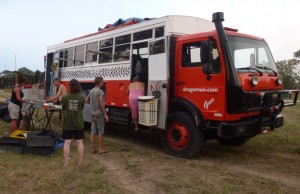 |
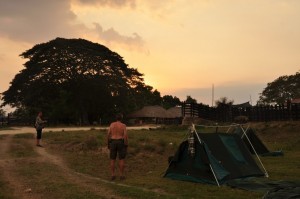 |
We had pasta for dinner. It was so hot that I was sweating and wet by the time I laid down in my tent. Then it started to rain and I went out to put the shell over the tent. As a result, our tent was like an oven and both Nam and I could not sleep. She went out to remove the shell once it stopped raining. Both of us do not like camping and prefer a room with a bed.
April 9 Wednesday: A nameless spot – Mompox (200km; 6hrs)
Today, the group would go to Playa Blanco and spend a night on the beach. I am not a beach cucumber and prefer to visit Mompox, a World Heritage Site located in the eastern backwaters of the muddy Rio Magdalena. We set off at 7am and Andy dropped me off at Sincelejo around 9am.
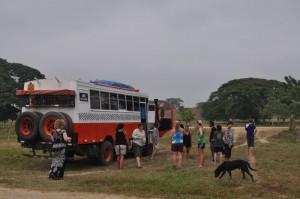 |
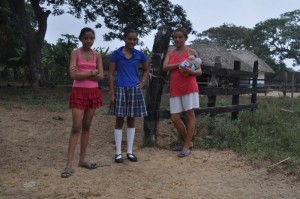 |
I took a shared taxi with air-con for COP$17000 to Magangué. As soon as I stepped out of the taxi, I was shocked by the intense and unbearable heat and high humidity. I took a boat to Bodega for COP$7000 and finally a shared taxi to Mompox (38km) for COP$13000. The taxi dropped me off at Casa Amarilla on Calle Albarrada, a comfortable old restored house (close to Plaza de Santa Bárbara and next to Rio Magdalena). I was hot and rushed to take a shower. I did not venture out till almost 4pm when the heat was less intense.
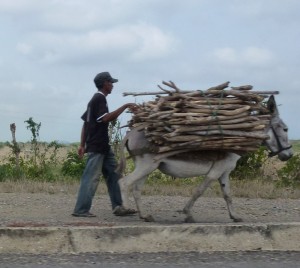 |
Founded in 1537, Mompox was once an important and prosperous port where all merchandise passed from Cartagena to the interior of the colony. It was also the first Colombian city to declare independence on August 6, 1810. Mompox was featured in Nobel laureate Gabriel Garcia Marquez’s novel, The General In His Labyrinth as Simon Bolívar spent some time here from 1827 to 1830. Towards the end of the 19th century shipping was diverted to the other branch of Rio Magdalena as the river silted up.
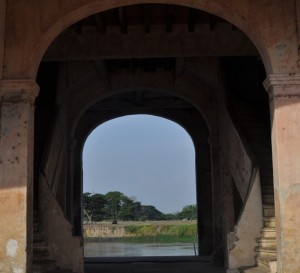 |
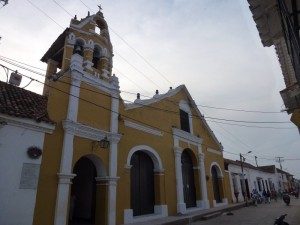 |
The town is small and dominated by the domes and towers of five churches. I tried to see all of them but managed to see Iglesia Santa Bárbara and Iglesia de San Agustin. Doors of Iglesia de la Inmaculada Concepción and Iglesia de Santo Domingo were closed. Iglesia de San Francisco is under renovation and most parts of Calle Albarrada are closed for repaving. The architectures here are different from those I have seen during my journey through Colombia. Most of the palacios (i.e. luxurious mansions built during the hay days) and churches are painted in yellow and white. Residential homes are mostly whitewashed houses. An elderly lady invited me to visit her house on Calle Albarrada which is dilapidated but atmospheric. I walked into a few more houses and public buildings and discovered most of them have similar layout i.e. a large open space serving as sitting room at the entrance with simple furniture including several rocking chairs, a courtyard with rooms on the side, and another open space serving as the dining area with a kitchen at the back. They all have a relaxing and timeless atmosphere with a high ceiling of 4-5m high.
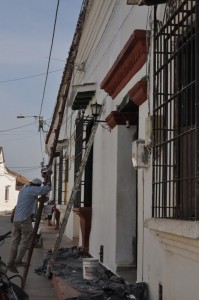 |
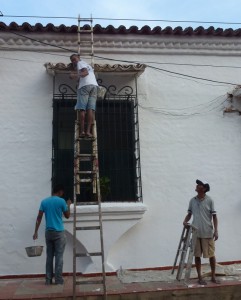 |
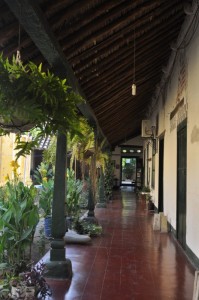 |
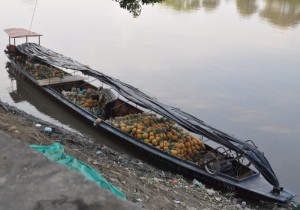 |
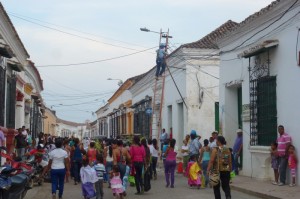 |
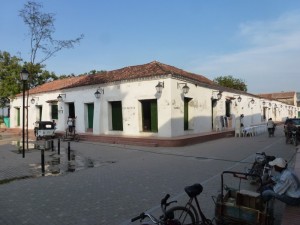 |
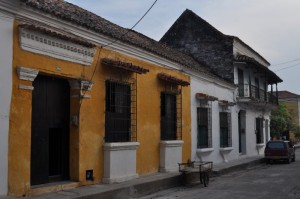 |
Mompox, a place lost in space and time, is still relatively untouched by mass tourism. The unpaved streets mostly covered in sand gives this town (roughly less than 2km-long and 1-km in width) a rare earthly feel. The best and large colonial buildings are now used for public purposes i.e. government offices, education, museums, clinic/ hospital. The building where Simon Bolívar once stayed between 1827 and 1830 is now part of the University of Cartagena. There are many lovely squares and impressive buildings such Portales de la Marquesa and Plaza de la Concepción.
I had a lunch-cum-dinner after 4pm at Comedor Costeño next to the river. I had a cold beer while watching a few boats transporting locals and goods passing by. Nothing much happened: I was the only customer (and person around the whole area). I thoroughly enjoyed the peace and tranquility. My fish was delicious and the meal cost me COP$16500.
With a full stomach, I continued with my exploration making stops whenever and wherever I liked. I was delighted to watch a procession of children portraying various scenes of Jesus’s life. I passed by Plaza Santa Domingo when street food stalls were being set up. But as I already had my meal of the day, I decided to return to Casa Amarilla to watch sunset and get on with my writing. I was so thirsty and hot that I had two beers, a Coca-Cola and plenty of water in the evening.
 |
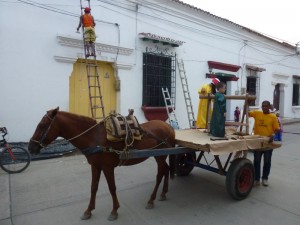 |
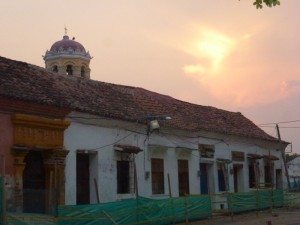 |
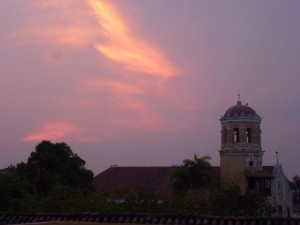 |
I shall always remember Mompox for two things. First, its intense heat and humidity. I have been to many deserts and hot spots. But Mompox has got me (plus my age): I kept sweating and had to take my third shower before going to bed! Second, the earthly but nostalgic atmosphere and the unassuming folks. I was invited to take a look at houses and buildings which interior is simple but elegant. The place is relatively poor but the people look happy and healthy. What more do you need!
April 10 Thursday: Mompox – Cartagena (250km; driving about 5 hrs; river crossing 1-3 hrs)
I had a surprisingly good sleep (thanks to the high ceiling and the two fans in the dormitory). I took an air-con bus at 5:45am for COP$50000. The bus arrived at Bodega before 7am. But we had to queue up for the 8:30am vehicle ferry. While waiting, I followed the bus driver to a food stall and had a fish soup with rice for COP$10000. When I got tired of doing nothing, I sat down to read my second book on this journey by Jeffrey Archer called ‘A Prison Diary’ Volume 2 on his days in the Wayland Prison from August 9 – October 15, 2001.
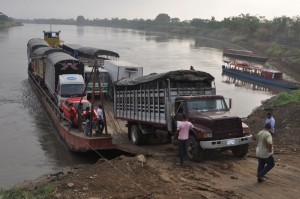 |
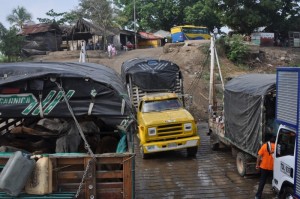 |
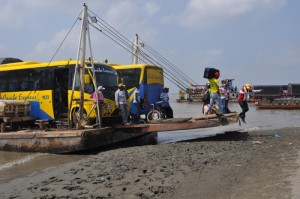 |
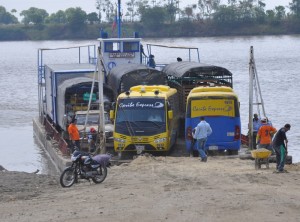 |
We finally reached Magangué at 10am. But our boat had to wait for another ferry to leave before it could use the landing. As a result, we were delayed for another 30 minutes. The highway to Cartagena is well-paved. We had a policeman coming on board to check ID cards once. I dozed off a few times and only got up before the bus arrived at the terminal.
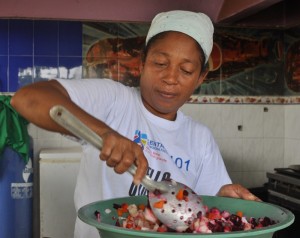 |
After getting off the bus, I touched my pocket but could not find my purse. What happened? I took it out once for paying for a snack (COP$1000) when several street food sellers came on board to sell food and drinks. I either had dropped the purse after paying for the snack or it was taken while I was dozing off. I returned to my seat but could not find my purse which still had some COP$120000. Anyway, I was lucky to meet Mary, a French lady who showed me how to take a bus (COP$1500). So I just had enough in my pocket to pay my way to Hotel Villa Colonial to meet up with the group.
I walked into the hotel lobby at 4pm and was happy to see my truck mates again. As soon as I got my suitcase back, I took a cold shower and put on clean clothes. I felt much better. Also the weather here is much nicer with breezes from the sea. I spent two hours strolling in the old town watching sunset before joining the girls for dinner in Getsemani. I had a long but enjoyable day!
April 11 – 13 Friday – Sunday: Cartagena
Old Town of Cartagena, rich in history and studded with massive churches, impressive plazas, cobble-stone alleys, whitewashed houses of colonial architectures with large and beautiful balconies, is considered the most beautiful city in Colombia. Founded in 1533, Cartagena became the main Spanish port on the Caribbean coast and the gateway to the north of the continent. It was plundered by numerous pirates (the best known one is Francis Drake in 1586) and burnt down several times. In response, the Spaniards constructed strong forts and elaborate thick walls encircling the town. Most of the walls are still standing. Cartagena, a World Heritage Site, has become a hot destination in the Caribbean attracting over a million foreign visitors a year.
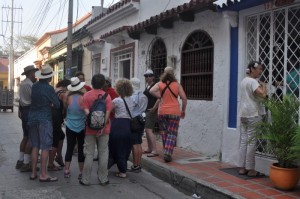 |
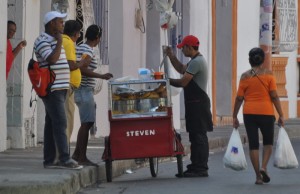 |
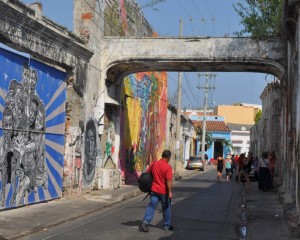 |
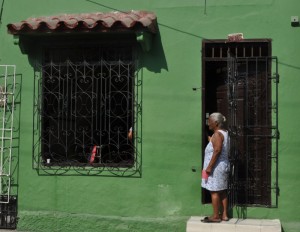 |
We had a guided tour on Friday from 8 to 11:30am. José, a Caribbean Indian is our guide. We began at Getsemani, the outer walled town which is not well preserved and strolled around Plaza Trinidad. The walls in this area are covered with street art/painting.
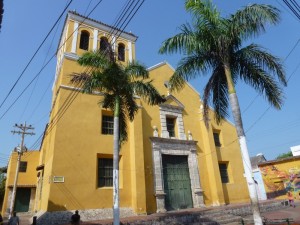 |
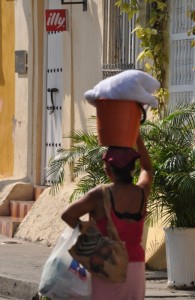 |
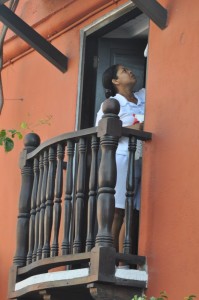 |
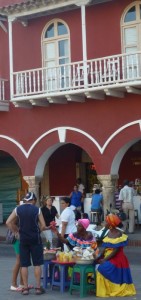 |
We then returned to Calle de la Media Luna, passed the Camellón de los Mártires to reach Torres del Reloj (the clock tower) behind which used to be the slave market. The next two hours was spent in the historical districts of El Centro and San Diego which have half a dozen of churches, plazas and many beautiful buildings which have been restored. Many have been turned into hotels or become part of the university campus.
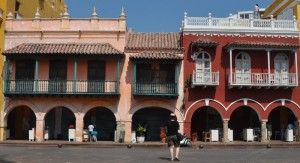 |
There are several impressive plazas. Plaza de la Aduana surrounded by key government buildings is the oldest and largest square serving as a parade ground and. Round the corner is Iglesia San Pedro Claver, the second most important church: Pedro Claver (1580-1654), a Spanish monk is said to have converted some 300000 slaves and indigenous people to Christianity. Next stop was Plaza de Bolívar around which the Museo del Oro Zenú, the Cathedral (construction began in 1575 but only finished inn 1612) and the Palacio de la Inquisició one of the finest buildings in town. Today it is a museum displaying instruments of torture as hundreds of heretics had been executed here and showing the history of the city.
|
|
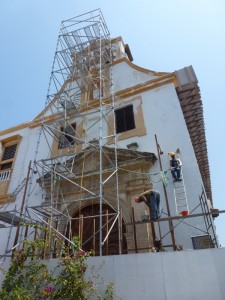 |
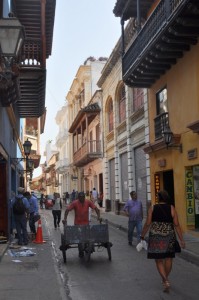 |
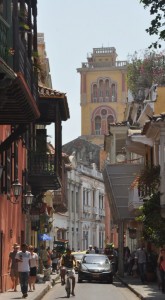 |
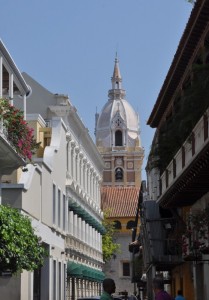 |
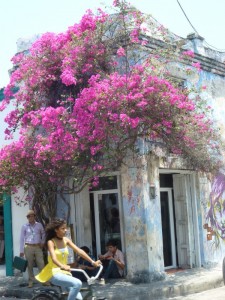 |
After a short walk along Calle Santo Domingo, we reached Iglesia de Santo Domingo, the town’s oldest church. Then we headed to Baluarte de la Cruz for a view of the Caribbean Sea before returning to the narrow alleys. We passed the Law Faculty of the University of Cartagena and many impressive palacios as well as normal houses with beautiful balconies decorated with colourful flowers and lush plants. The big mansions including a convent have now been turned into 5-star or boutique hotels or become parts of the University of Cartegena or government offices. We went to the far end at Baluarte de Santa Catalina and had a shopping break at Las Bovedas which have been turned into a shopping arcade. When the walking tour ended near Plaza La Zerrezuela, I left the group and continued with my walk in the Old Town.
 |
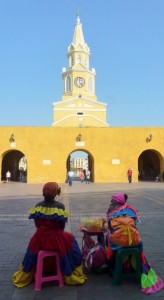 |
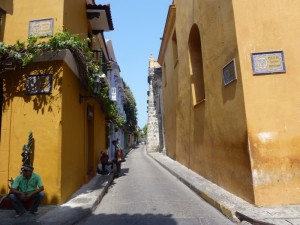 |
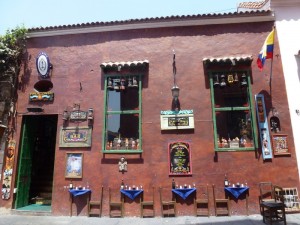 |
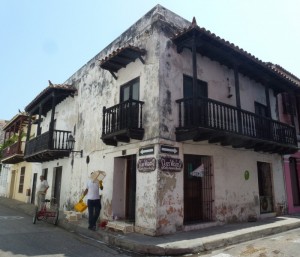 |
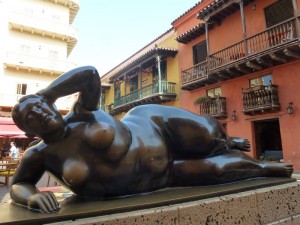 |
First, I went to a shop to get some suitable clothes for the hot days ahead. Then I went to the Museo del Oro Zenú which has a good collection of gold and pottery from the Zenú culture. It is worth visiting: it is free and has good English subtitles. Next I went to the museum located at Palacio de la Inquisició which charges an entrance fee of COP$16000. The architecture is impressive but the display is unimpressive. Most of the information is only displayed in Spanish. For a city with such a long and rich history, I consider this museum not worth visiting especially given its high entrance fee!
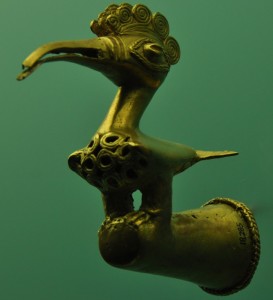 |
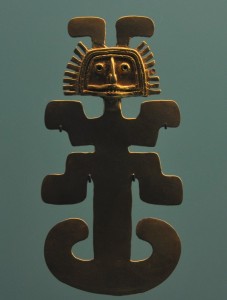 |
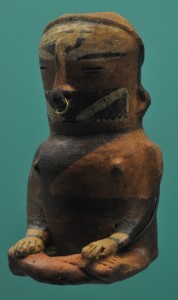 |
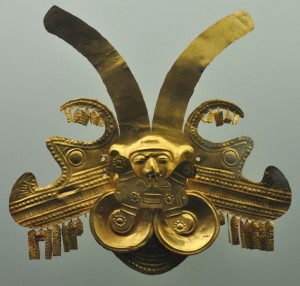 |
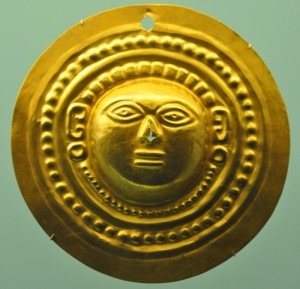 |
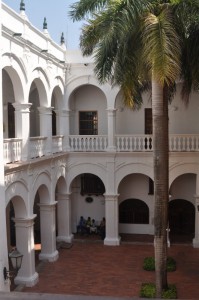 |
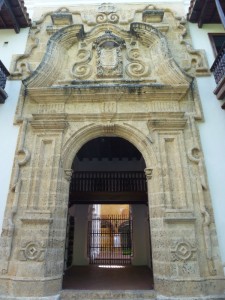 |
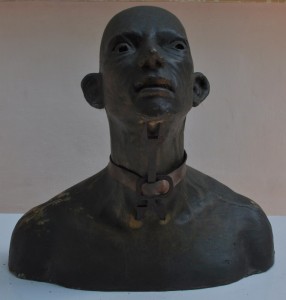 |
We had a nice group dinner as six members (Denise, Jane, Michelle, Andreas, Naomi and Marina) would be ending their holiday at Cartagena. I also joined them for a drink at the atmospheric Plaza Trinidad. The air was pleasantly warm and the street was full of young people at bars and cafes.
The overland trip ended in Cartagena in the morning on April 12 without any more organised activity. I had to spend one more night in Cartagena and take a flight to Panama City the following day. I joined Andreas and David to visit the Castillo de San Felipe de Barajas. Though it was only 9:30am, the sun was already unbearably strong. Work on the castle began in 1639 and was completed towards the end of the 18th century. We reached different levels and every corner through tunnels.
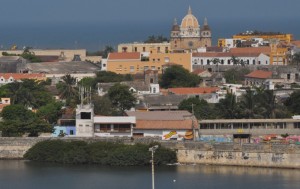 |
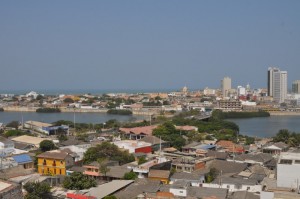 |
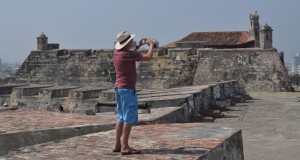 |
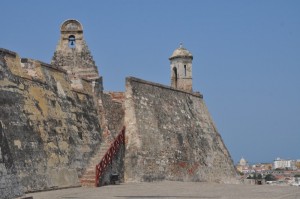 |
After the visit, we decided to take a ride on a local bus to the harbor. The fare is COP$1700. But we did not know where we were going. The area seems poor and disorganized. We decided to jump off to head back to the centre. The bus conductor stopped the traffic in order to put us on another bus. We finally found our way back to the hotel.
It was so hot that we decided to stay indoor till late afternoon. Andreas, David, Nam and I met up at 4pm and took a taxi to Bocagrande (new development along the beach which has a Miami feel). We sat at the beach for a while. Then David discovered his flip-flops were stolen! We walked to the other side of the beach to watch sunset with a cold beer in hand. Instead of going to the Old Town, we headed back to the hotel and had pasta in Getsemani. I was tired and went to bed before 10pm.
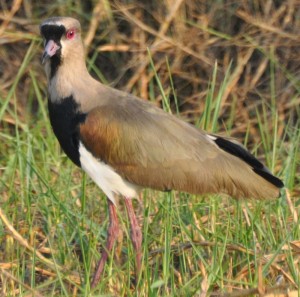 |
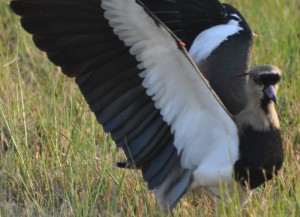 |
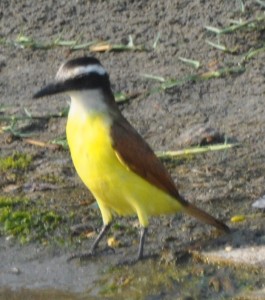 |
While waiting for the plane, I suddenly heard my name called in Spanish. I rushed out to the airport officer who notified me that my luggage had been selected for random checking. I had no problem with this except that I had to open my suitcase and had a hard time in zipping it up after the search. The plane took off on time and I arrived at Panama City around 2:30pm.
Remarks
My overland trip with Dragoman beginning at Quito on March 25 and ending in Cartagena on April 12 has been pleasant but uneventful. Our truck ‘Gus’ has mainly followed the Pan-American Highway which is generally well-maintained. We spent most of time in Colombia passing through the spectacular mountainous region between Ecuador and the coffee region before reaching the Caribbean coast. I have a good impression of Colombia.
First, Colombia is generally well-developed and has the third largest economy in the continent. It is no longer a lawless country ruled by drug cartels. Normalcy has returned though locals still find corruption a problem besetting the country.
Second, Colombians know how to live well. Most people might not be rich, but they are relaxed and love music and dancing. I am a square person without a sense of humour and do not drink much. I therefore do not have a chance to experience Colombia’s vibrant nightlife. But my truck mates who enjoy clubbing all had a fantastic time: they returned to the hostel between 1 and 3am.
Third, I am intrigued by Medellín and Mompox. Medellín which was once a sinister city controlled by Pablo Escobar’s drug cartel, has turned a new leaf taking on a modern and metropolitan feel. The metrocable system reaching some of the poorest neighbourhoods is impressive. This shows what a progressive local government with vision and drive can achieve in two decades. I also love the nostalgic and earthly atmosphere in Mompox which fortunately has been relatively untouched by mass tourism. The main roads in Mompox are being repaved and major buildings are under renovation. But I hope local authorities would not turn this living World Heritage Site into a touristic town for the sake of money and economic development.
Fourth, Cartagena, a gem in the Caribbean Sea is charming with great architectures and nightlife. But it is too touristic and commercial. I am particularly disappointed by the Museum of Cartagena which charges a high entrance fee (COP$16000) but provides unimpressive display and interpretation. The Castillo de San Felipe de Barajas is not as impressive as the ones in Puerto Rica, Havana and St Kitts (the few fortresses with World Heritage status that I have visited in the Caribbean).
Fifth, Colombia has a lot to offer to visitors and I know I have to return to it one day. Though I have spent over two weeks in Colombia, I have not been in the centre of the Old Town of Cartagena in the evening. I also have not been to Bogota, capital of Colombia. Out of its seven World Heritage Sites, I have only visited three of them. I am keen to visit the archaeological sites at San Augustin and Tierradentro if I find my way back to Colombia.


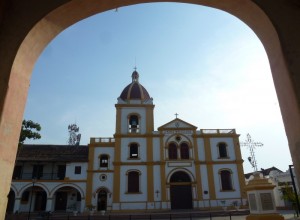
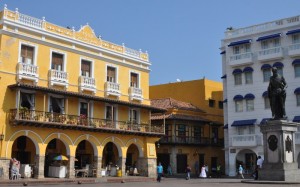
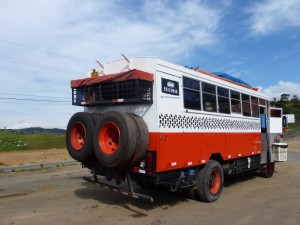
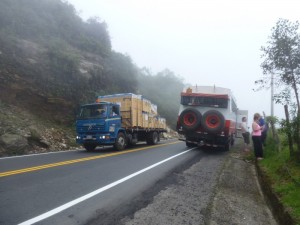
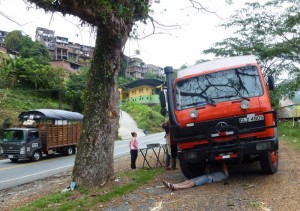
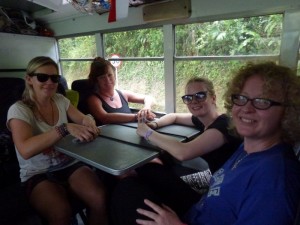
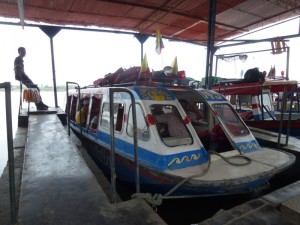
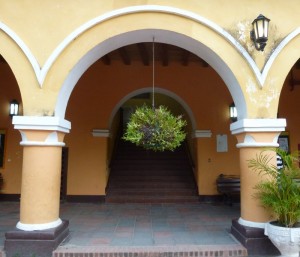
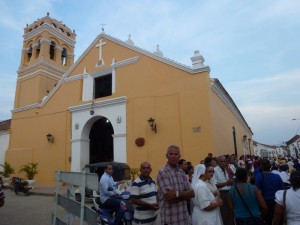
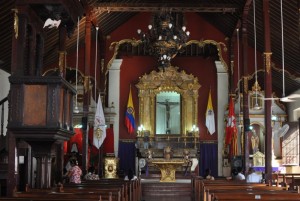
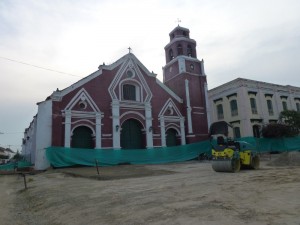
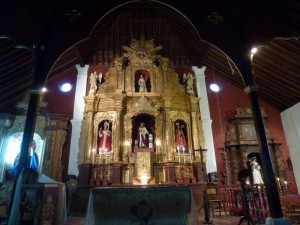
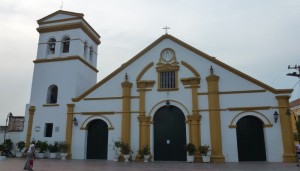
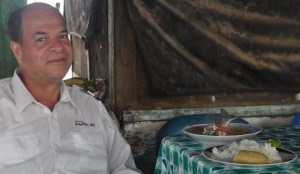
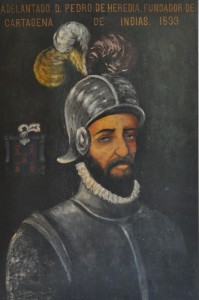
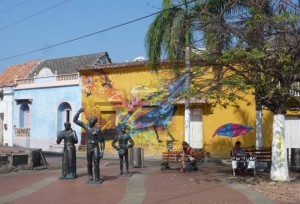
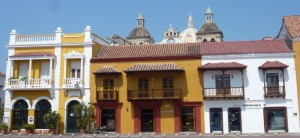
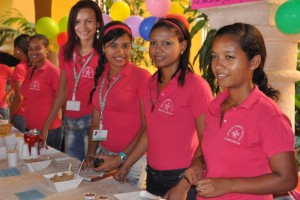
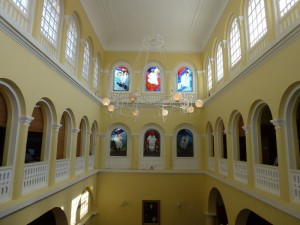
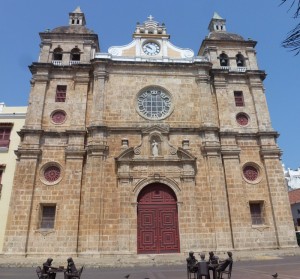
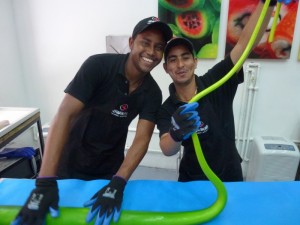
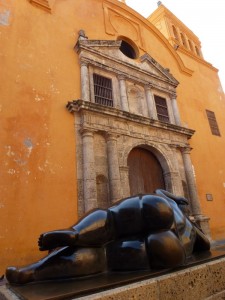
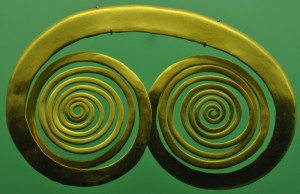
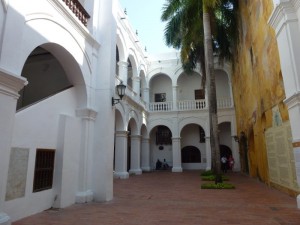
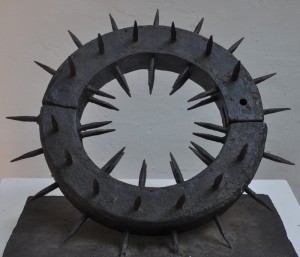
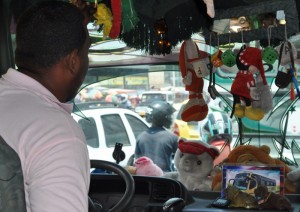
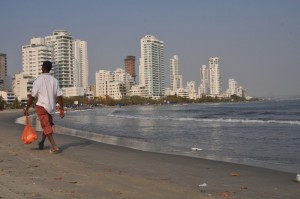
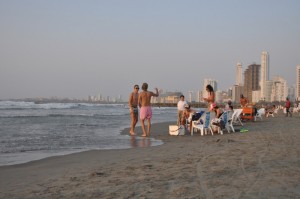
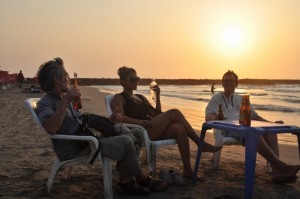
Still sounds rather arduous, but I hope you are enjoying it.
The most remarkable fact is your choice of book!
Robert
Hi Sarah, nice to see some familiar pictures and interesting to read what we have missed in Mompox. As you might have learned, Gabriel Garcia Marquez, who you mention and whose house we had seen in Cartagena, died just two weeks ago. During the trip I read his “Crónica de una muerte anunciada”. Greetings from chilly Switzerland also to Dave &Co – with <10°C in the mornings, I would appreciate a little bit of the heat from Colombia. Andres